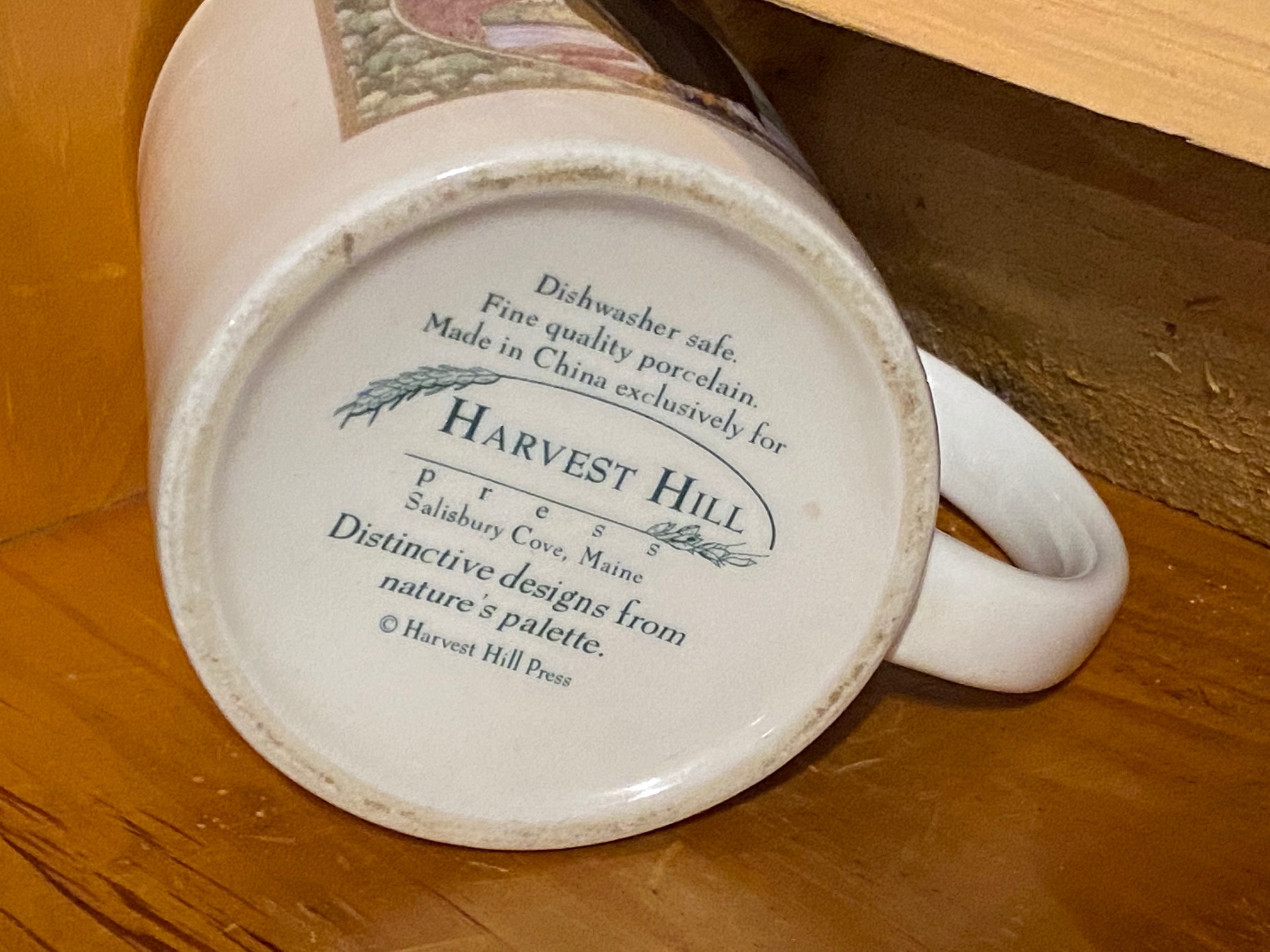Harvest Hill Press (Maine) porcelain coffee mug with bald eagle design: 17,800 ppm Lead on black of the eagle.
2020 | Harvest Hill Mug | Harvest Hill Press | Mug | Mugs | Mugs with Lead
 How much Lead is “too much” Lead?
How much Lead is “too much” Lead?
…including some “Fun Facts”:
- Newly-manufactured items (made today) are considered unsafe for children to use if they are finished with any paint or coating that is 90 ppm Lead or higher.
- Substrates that test positive for 100 ppm Lead (or higher) are considered unsafe for children.
- There is currently no regulatory standard setting limits for Lead in paint on modern consumer goods intended for use by adults.
- Mugs are generally not considered to be “items intended for use by children” and, as such, new mugs manufactured today may still be made with high-Lead decorative coating.
- When Lead-based paint was banned in 1978, the requirement was that paint for residential use applications only (paint for houses, applied in areas that could be reached by children) must henceforth contain less than 600 ppm Lead.
- The allowable level of Lead in house paint was subsequently lowered, and today modern house paint must also be below 90 ppm Lead [and most house paints now usually test completely negative for Lead].
- Federal funds are currently allocated for interventions in pre-1978 housing (for low income families) when the paint is positive for Lead at a level of one milligram per square centimeter [this is roughly equivalent to a high-precision XRF instrument reading of 5,000 ppm Lead].
- The mug pictured here has Lead paint (in the exterior design) with levels of Lead that far exceed (exceed by more than 200 %) the standards above under which the feds would consider it unsafe in housing (if it were house paint – and not paint on a mug.)
- Because it is a mug, and because mugs are not intended for use by kids (even if it were made recently and not specifically manufactured as a mug for kids) – it is considered perfectly legal and safe.
- It takes a microscopic amount of Lead to poison a human being.
- All federal agencies agree that there is no safe level of Lead exposure.
- Paint and glaze often wears off of the surfaces of mugs (especially with daily use and washing – either by hand or in the dishwasher.)
The question that comes up for me, taking into account everything noted above: Do you still think you should drink from a mug like this?
XRF Readings for the mug pictured in this post
60-second tests
XRF reading on black of the eagle design
– other colors tested similarly
– yellows also tested positive for trace Cadmium (under 100 ppm)
- Lead (Pb): 17,800 +/- 400 ppm
- Barium (Ba): 1,494 +/- 63 ppm
- Chromium (Cr): 3,825 +/- 303 ppm
- Antimony (Sb): 101 +/- 14 ppm
- Silver (Ag): 17 +/- 4 ppm
- Tin (Sn): 180 +/- 14 ppm
- Platinum (Pt): 281 +/- 82 ppm
- Zinc (Zn): 2,228 +/- 86 ppm
- Cobalt (Co): 5,483 +/- 227 ppm
- Iron (Fe): 1,351 +/- 160 ppm
- Manganese (Mn): 2,821 +/- 312 ppm
- Vanadium (V): 480 +/- 141 ppm
- Titanium (Ti): 2,252 +/- 300 ppm
XRF reading on plain white of mug
- Barium (Ba): 1,219 +/- 44 ppm
- Bismuth (Bi): 109 +/- 13 ppm
- Zinc (Zn): 1,752 +/- 73 ppm
- Iron (Fe): 524 +/- 121 ppm
- Vanadium (V): 3,791 +/- 275 ppm
- Titanium (Ti): 7,411 +/- 464 ppm
Some additional reading for those interested in this post:
- More mugs I have tested.
- Lead-free mugs I have tested.
- My guidance for choosing Lead-free mugs.
- More information about the type of testing I do and report on this site.
- More Harvest Hill mugs I have tested.
As always, thank you for reading and for sharing my posts. Please let me know if you have any questions and I will do my best to answer them personally as soon as I have a moment.
Tamara Rubin
#LeadSafeMama
Never Miss an Important Article Again!
Join our Email List


 How much Lead is “too much” Lead?
How much Lead is “too much” Lead?
